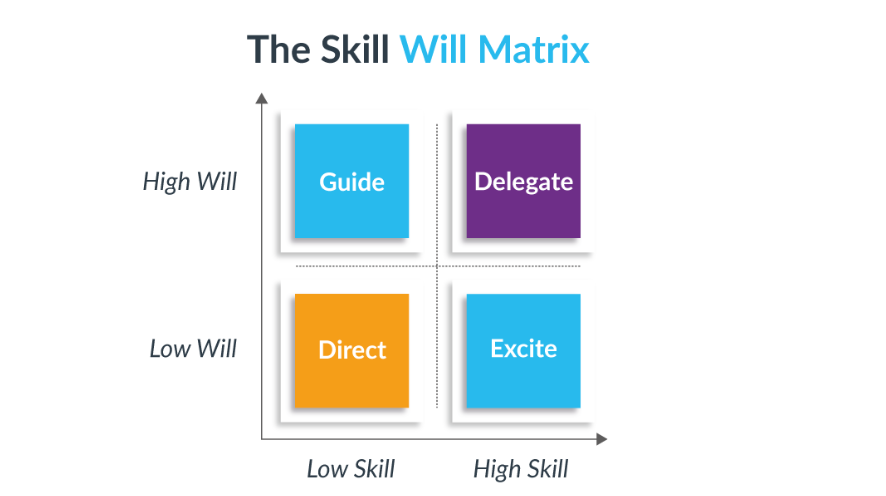Situational Leadership: Adapting Management Style for Optimal Team Performance

As managers, we often encounter diverse teams with varying levels of performance and engagement. Adopting a one-size-fits-all management style can be counterproductive, leading to either micro-managing or under-managing. This is where situational leadership comes into play. By understanding the needs of both the situation and the individual, managers can flex their leadership styles to meet their team members' specific needs.
In this blog, we will explore the significance of situational leadership in coaching people and effectively meeting their needs.
The Skill/Will Matrix:

- The Skill/Will matrix helps assess the individual's current situation based on their performance and engagement.
- The "Will" dimension represents factors such as motivation, commitment, and willingness
- The "Skill" dimension reflects performance levels, including knowledge, experience, and skills.
- By plotting teammates on the Skill/Will matrix, managers gain insights into the team's overall dynamics and can tailor their leadership approach accordingly.
High Will/Low Skill:
- Teammates high on engagement but low on performance will need to be provided guidance, assigned mentors, offer training, and create a risk-free environment to fail.
High Skill/Low Will:
- Teammates who excel in performance but lack engagement require a focus on motivation. By assigning stretch opportunities, presenting challenges, and finding ways to ignite their enthusiasm, we can invigorate these individuals and reignite their passion.
Low Will/Low Skill:
- To address low engagement and performance among teammates, focus on building motivation, providing direct guidance, and developing an exit strategy if necessary.
High Will/High Skill:
- Highly engaged and high-performing teammates thrive with recognition, encouragement, and delegated autonomy. Set ambitious goals, empower them, and avoid micromanagement to nurture their motivation and facilitate continuous growth.
Continuous Execution and Evaluation:
- It's important to regularly assess team members using the Skill/Will Matrix and adapt your management styles accordingly. Create action plans, evaluate their effectiveness, and adjust leadership to individual needs.
- Recognize that team members may shift quadrants, necessitating adaptable leadership styles.
In Summary, Situational leadership is a dynamic approach that acknowledges the diverse needs of team members, enabling managers to adjust their leadership styles accordingly. Utilizing tools like the Skill/Will Matrix, managers can assess individual skill levels and engagement, facilitating the creation of personalized action plans for team optimization. Recognizing that team members may transition between quadrants of the matrix, adaptable leadership becomes vital. This approach empowers managers to provide tailored support, motivation, and empowerment to meet individual needs. Continuously evaluating and adapting leadership styles cultivates a dynamic work environment, striking a balance between performance and engagement, and unlocking the team's full potential.